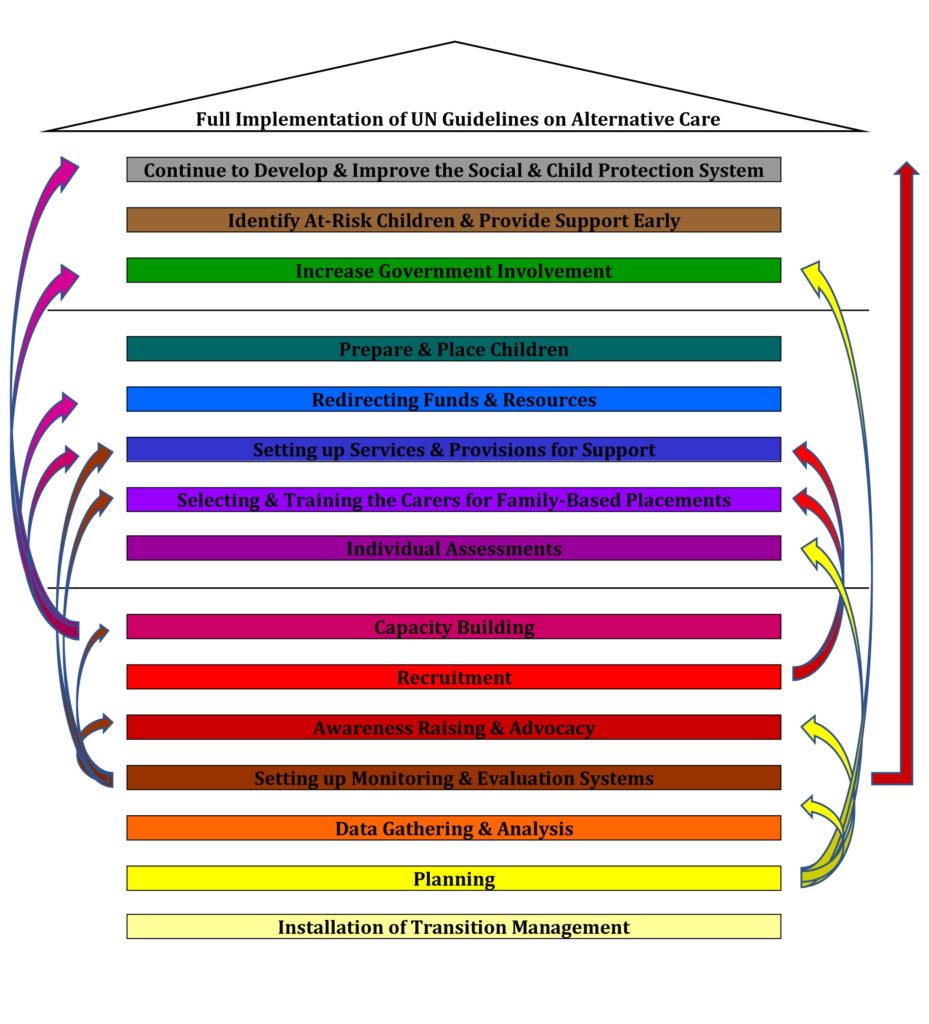Part 7 of the explanation with the ToC: It could be said that awareness-raising and advocacy are two sides of the same coin. Advocacy is raising awareness in the government and its representatives and through doing so lobbying for necessary changes. Awareness-raising is providing communities, families, and the general public – either individually, in small groups or en masse – with information about issues that they might not have had knowledge or proper insight about previously, to change their mindset and opinion.
The extent to which government policies and laws are in place to protect children and families varies from place to place. The data collection and analysis will give information about what is and is not relevant in the local situation. However, often there is a need for advocacy on the following topics:
- Child rights (all of them)
- Having legislation in place that supports social and child protection, and family-based alternative care
- Making sure that policies and daily practice are in line with legislation supporting this
- Understanding the need to move away from institutional childcare
- Instead of just allowing people to claim they used institutionalisation as a ‘last resort’, create a burden of proof: having to show that all other options were properly considered or tried and exhausted
- Understanding the need for family strengthening and community services
- Developing proper data gathering and management systems for information on vulnerable children
- Investing in and supporting a social and child protection system
- Understanding that institutional care is more expensive than the alternatives and helping the government to find the money to fund the temporary higher costs during the transition period
- Effective gatekeeping
- Ensuring child participation
- Preventing stigmatisation and discrimination
- Promoting accessibility and inclusivity
Likewise, the awareness-raising needed will depend on local circumstances. However, unless there are clear indications that these topics are not a problem in any way, awareness-raising is usually needed on:
- The harm done by institutional care and the benefits of family-based care
- Child rights
- Children and families having a voice, and how to use it effectively
- Positive parenting
- Reaching out to people who donate to support institutions to persuade them to redirect their donations to community- and family-based initiatives
- Stigma busting
Removing stigma and discrimination is an essential part of the transition process, as their presence causes unnecessary separation of children from their families. If you address other issues, without addressing that of stigma and discrimination, you are essentially putting a plaster on a gushing wound: the bleeding will continue, children will continue to be deprived of parental care unnecessarily. Stigma and discrimination particularly affect:
- Children with disabilities
- Children affected by HIV/AIDS
- Children of unwed mothers
- Children of ethnic, religious or linguistic minorities
- Indigenous children
- Unaccompanied and separated migrant children
By reducing or removing these stigmas, parents are not put under pressure from family, community, medical professionals, and social workers to relinquish their children, allowing children to grow up in their own family. Plus, there will be greater acceptance of children from stigmatised groups returning to the community, and greater success in finding foster families and caregivers for small group homes to care for these children.
On Monday, other aspects of awareness-raising and advocacy will be discussed in the blog.

If you would like to read the explanation with the model from the very start, you can go HERE.
Please share this blog to help spread awareness.

